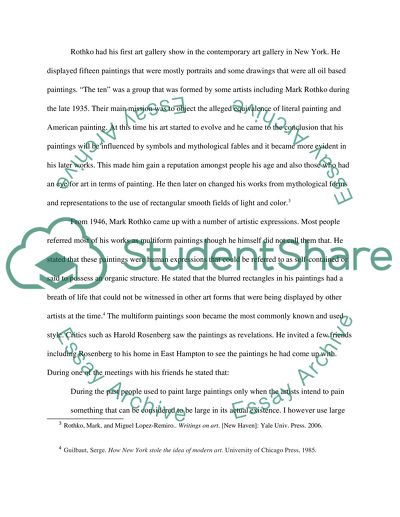Cite this document
(“Mark Rothko - Contradiction between flatness and depth Research Paper”, n.d.)
Mark Rothko - Contradiction between flatness and depth Research Paper. Retrieved from https://studentshare.org/visual-arts-film-studies/1702491-mark-rothko-contradiction-between-flatness-and-depth
Mark Rothko - Contradiction between flatness and depth Research Paper. Retrieved from https://studentshare.org/visual-arts-film-studies/1702491-mark-rothko-contradiction-between-flatness-and-depth
(Mark Rothko - Contradiction Between Flatness and Depth Research Paper)
Mark Rothko - Contradiction Between Flatness and Depth Research Paper. https://studentshare.org/visual-arts-film-studies/1702491-mark-rothko-contradiction-between-flatness-and-depth.
Mark Rothko - Contradiction Between Flatness and Depth Research Paper. https://studentshare.org/visual-arts-film-studies/1702491-mark-rothko-contradiction-between-flatness-and-depth.
“Mark Rothko - Contradiction Between Flatness and Depth Research Paper”, n.d. https://studentshare.org/visual-arts-film-studies/1702491-mark-rothko-contradiction-between-flatness-and-depth.


